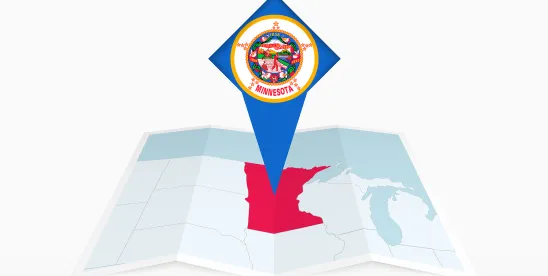Effective January 1, 2025, employers with thirty or more workers in Minnesota will be required to provide salary ranges and a general description of benefits in job postings—a requirement that appears to apply to recruiting and staffing companies in Minnesota seeking candidates to work for employers in other states.
Quick Hits
- Effective January 1, 2025, all employers that have thirty or more employees in Minnesota will be required to provide salary ranges and a general description of benefits in job postings—seemingly, including Minnesota recruiting and staffing companies seeking workers to work for employers in other states.
- The law is silent as to general solicitations and positions with low base salaries but high potential commissions.
Under Minn. Stat. 181.173, included in Senate File (SF) 3852, employers with thirty or more employees must disclose “in each posting for each job opening with the employer the starting salary range, and a general description of all of the benefits and other compensation….” Employers may also list a fixed pay rate (e.g., $18 per hour). Important for recruiting and staffing associations, this new law is with respect to
any solicitation intended to recruit job applicants for a specific available position, including recruitment done directly by an employer or indirectly through a third party, and includes any postings made electronically or via printed hard copy, that includes qualifications for desired applicants. (Emphasis added.)
This means that recruiting and staffing agencies must disclose salary ranges for their clients in the job postings as well as the general description of benefits. The law is unclear as to whether a Minnesota recruiting and staffing company must post salary ranges for an open position in another state, such as in Wisconsin (for a Wisconsin employer). In the March 7, 2024, House Labor and Industry Finance and Policy Committee meeting, Representative Kristin Bahner (DFL) (a chief author of the legislation) said that the law is employer-based, and it applies to employers within the boundaries of Minnesota. She stated that they could have employees coming from Wisconsin, as well as Minnesota, and the out-of-state job candidates would “have the benefit of transparency as well.”
The law is also unclear about whether it applies to general solicitations (for example, “Minnesota company is seeking warehouse workers in multiple positions”). The law provides that the posting is related to a “specific position.” Accordingly, as there is no specific position in a general solicitation, it does not appear a salary range needs to be posted. However, if a recruiter were to reach out to a potential applicant for a specific job, it would likely be considered a posting for which a salary range would be required. For example: “I have an employer located in the Iron Range that is looking for a General Manager ($90K–$125K) plus x benefits, and I think you would be a strong candidate.”
As to commissioned positions that may have a low base with unlimited potential commissions, the law is silent. It does require that the range be made “in good faith.” As we get closer to January 1, 2025, the state may publish guidance that may address various scenarios—though it would be guidance only and would not relieve compliance with the law. When asked about how to address a salary range that can vary based on one’s experience, Representative Bahner responded, “Every HR has access to data within their own company” to know what the ranges are and they can search online job posting services, “and literally google average salary ranges.” Representative Brian Daniels (R) noted that the range must have a “minimum” and “maximum,” though it could be a large amount.
Representative Bahner noted, “I know it can be very expensive to try to recruit talent and put them through their paces to make sure that it is a good fit between both parties,” and the new law is intended to “keep that cost down for employers.” She noted that reports have shown that including pay ranges in job announcements results in more applicants and “better quality candidates.”
Key Takeaways
Recruiting and staffing service providers may want to alert out-of-state customers that they will need to identify wage ranges and related benefits for postings on or after January 1, 2025.




 />i
/>i

